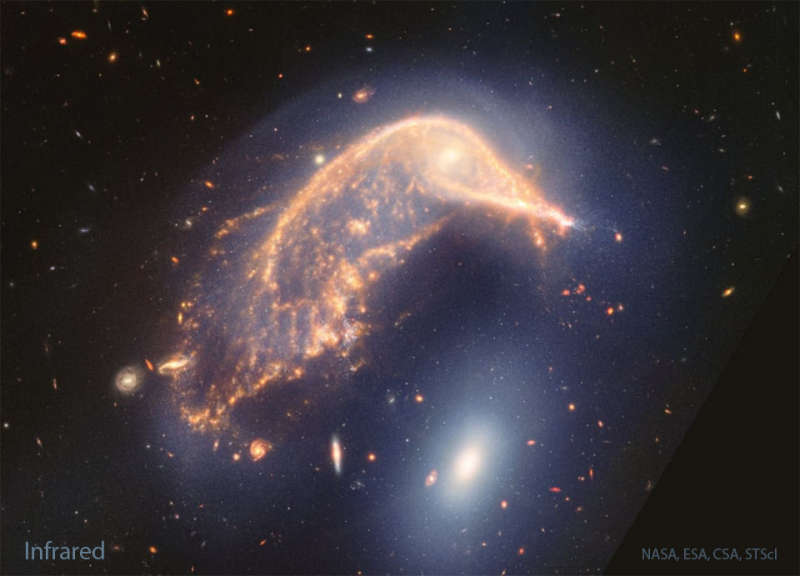Credit & Copyright: NASA,
ESA,
CSA,
STScI;
Hubble Rollover Reprocessing & Copyright:
Raul Villaverde
Explanation:
To some, it looks like a penguin.
But to people who study the universe, it is an interesting example of two big galaxies
interacting.
Just a few hundred million years ago, the upper NGC 2936 was likely a
normal spiral galaxy:
spinning, creating stars, and minding its own business.
Then it got too close to the massive
elliptical galaxy
NGC 2937, below, and took a dive.
Together known as Arp 142, they are
featured
in this new
Webb
infrared image, while a
visible light
Hubble
image appears in comparison.
NGC 2936 is not only being deflected, but
distorted, by this close gravitational interaction.
When massive galaxies
pass near each other,
gas is typically condensed from which
new
stars form.
A young group of stars appears as the nose of the penguin toward the right of the upper galaxy, while in the center of the
spiral,
bright stars together appear as an eye.
Before a billion years, the
two galaxies will likely merge into one larger galaxy.
Explore Your Universe:
Random APOD Generator
1999 2000 2001 2002 2003 2004 2005 2006 2007 2008 2009 2010 2011 2012 2013 2014 2015 2016 2017 2018 2019 2020 2021 2022 2023 2024 2025 |
Yanvar' Fevral' Mart Aprel' Mai Iyun' Iyul' Avgust Sentyabr' Oktyabr' Noyabr' Dekabr' |
NASA Web Site Statements, Warnings, and Disclaimers
NASA Official: Jay Norris. Specific rights apply.
A service of: LHEA at NASA / GSFC
& Michigan Tech. U.
|
Publikacii s klyuchevymi slovami:
colliding galaxies - vzaimodeistvuyushie galaktiki
Publikacii so slovami: colliding galaxies - vzaimodeistvuyushie galaktiki | |
Sm. takzhe:
Vse publikacii na tu zhe temu >> | |
